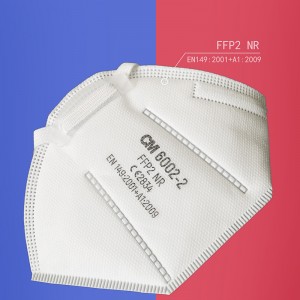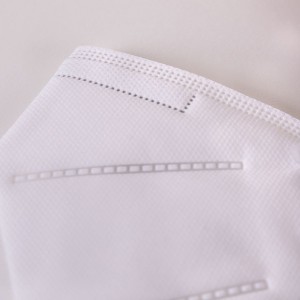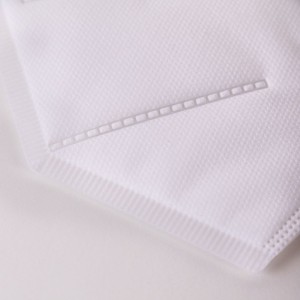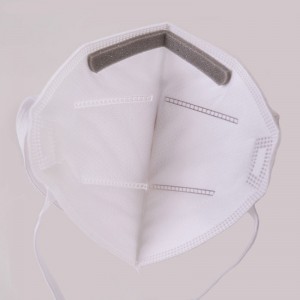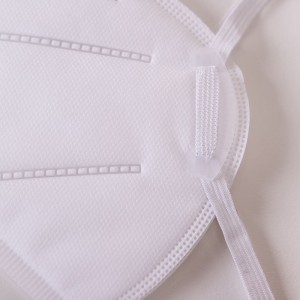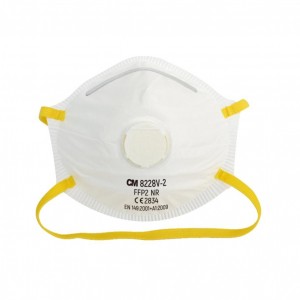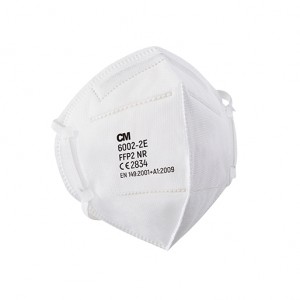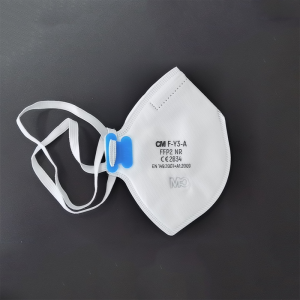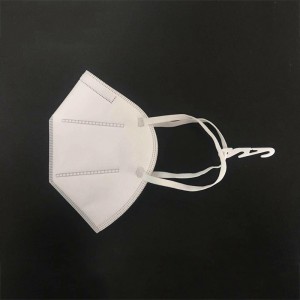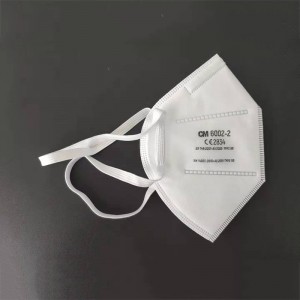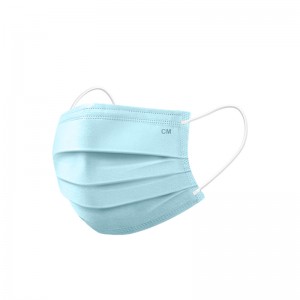
Particle filtering half mask (6002-2 FFP2)
Material composition
Filtering system is designed and layered by surface 50g non-woven, second layer by 45g hot air cotton, third layer by FFP2 filtration material, inner layer by 50g non-woven




6002-2 EN149 FFP2 is tested under EN 149:2001+A:2009 Respiratory protective devices-Filtering half masks to protect against particles
Compatibility with skin
Materials that may come into contact with the wearer’s skin shall not be known to be likely to cause irritation or any other adverse effect to health. (Passed)
Flammability
When tested, the particle filtering half mask shall not burn or not to continue to burn for more than 5 seconds after removal from the flame. (Passed)
Carbon dioxide content of the inhalation air
The carbon dioxide content of the inhalation air (dead space) shall not exceed an average of 1.0% (volume). (Passed).
Field of vision
The field of vision is acceptable if determined so in practical performance tests. (Passed)
Breathing resistance
| Classification | Maximum permitted resistance (mbar) | ||
| Inhalation | Exhalation | ||
| 30 L/min | 95 L/min | 160 L/min | |
| FFP1 | 0.6 | 2.1 | 3.0 |
| FFP2 | 0.7 | 2.4 | 3.0 |
| FFP3 | 1.0 | 3.0 | 3.90 |
(Passed) Packaging The following information shall be clearly and durably marked on the smallest commercially available packaging or legible through it if the packaging is transparent. 1.The name, trademark or other means of identification of the manufacturer or supplier 2.Type-identifying marking 3.Classification The appropriate class (FFP1, FFP2 or FFP3) followed by a single space and the ‘NR’ if the particle filtering half mask is limited to single shift use only. Example: FFP2 NR. 4.The number and year of publication of this European Standard 5.At least the year of end of shelf life. 6.The manufacturer’s recommended conditions of storage (at least the temperature and humidity)
Particle filtering half mask have been proven to offer better protection against droplets, aerosols and fluid penetration and which form a tight seal around the mouth and nose.
Medical/surgical masks provide an immediate barrier between the respiratory organs and the surrounding environment. The effectiveness of a face mask or a respirator is determined by two significant factors, the filtration efficiency and fit (facepiece leakage). Filtration efficiency measures how well the mask filters particles in a specific size range, which includes viruses and other submicron particles, whereas fit measures how well the mask or respirator prevents the leakage around the facepiece. Based on the Food and Drugs Administration (FDA) standards and filtration effciency, medical masks can be categorised into different categories. These are divided into ASTM level 1, 2 and 3 based on the fluid resistance efficiency. Level 3 gives the highest bacterial filtration efficiency with high resistance to the penetration of body fluids. In Europe, medical masks comply with the requirements of European Standard EN 14683:2019.
However, surgical masks are less effective when compared to respirators. Respirators comprise of tight-fitting protective devices or air purifiers that can prevent very small particles (<5 μm) from passing through a person’s respiratory tract. This is achieved either by removing the contaminants or by providing an independent source of air to breathe. They are named differently in different countries. In the USA, the National Institute for Occupational Safety and Health (NIOSH), determines the filtration efficiency of these respirators and they are classified into N-, R-, and P- series for not oil resistant, somewhat oil-resistant and strongly resistant, respectively. Each of the three series has three different filtration efficiencies at 95, 99 and 99.97%, namely N95, R95, P95, etc. In Europe, the categories of respirators can be classified as filtering half masks (filtering face pieces (FFP)), half masks, powered air-purifying respirator (PAPR) and SAR (atmosphere-supplying respirator). According to European standards, FFPs are further divided into FFP1, FFP2 and FFP3, with an efficiency of 80%, 94% and 99%, respectively (EN 149:2001).


